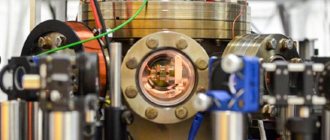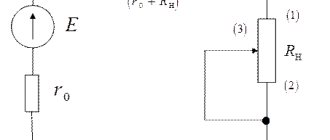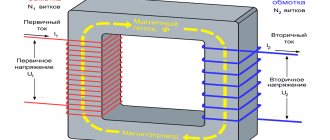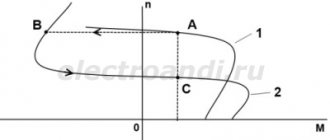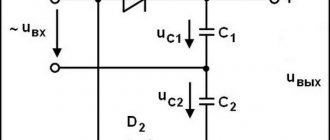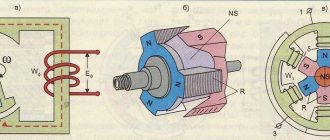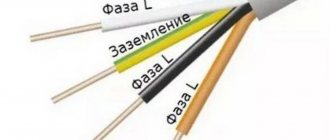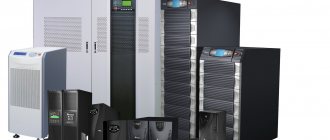A cozy country house is every person’s dream. However, while having a lot of advantages, suburban real estate is not without its disadvantages. This usually concerns utility networks, in particular the supply of electricity.
If the building is located in an area where the power line is unstable, the question arises: “How to ensure an uninterrupted supply of electricity?” It is useless to fight with utility services, so you have to solve the problem on your own.
The best option to solve the problem is an electric generator. Let's look at this alternative power source from all angles.
The use of generators in everyday life and at work
Autonomous current generators provide ample opportunities for repair, construction and manufacturing enterprises in any sector of the national economy and industry.
The application is so wide that they are indispensable in the maintenance of industrial workshops, repair shops and production lines. AC power plants operate in country houses and private homes as an autonomous source of power supply, as part of equipment in repair and commissioning teams. Welding power plants at construction sites are much more convenient than stationary welding machines, especially at the initial stages of construction.
Turnkey renovations become easier with autonomous power generators. They save time and become indispensable in field conditions when there is no power supply. Installation and fabrication of metal structures also becomes easier when there are no electrical sources nearby. It is more convenient to assemble metal structures on site, rather than transporting the finished structure to the installation site.
There are times when duplicating the main power supply is vital. For clinics and hospitals with intensive care and surgical departments, the presence of an autonomous emergency power supply system is very important. After all, human lives depend on it. Alternating current generators are widely used in everyday life and in production due to their compactness, reliability and mobility. A wide range of applications makes them universal devices capable of producing current not only for industrial needs, but also in everyday life.
Source
History of the invention of the electric current generator
Russian scientist E.H. Lenz back in 1833. pointed out the reversibility of electric machines: the same machine can work as an electric motor if it is powered with current, and can serve as a generator of electric current if its rotor is driven into rotation by some engine, for example a steam engine. In 1838 Lenz, one of the members of the commission for testing the action of the Jacobi electric motor, experimentally proved the reversibility of the electric machine.
The first electric current generator, based on the phenomenon of electromagnetic induction, was built in 1832. by Parisian technicians the Pixin brothers. This generator was difficult to use, since it was necessary to rotate a heavy permanent magnet so that an alternating electric current would arise in two wire coils fixed motionless near its poles. The generator was equipped with a device for rectifying the current. In an effort to increase the power of electric machines, inventors increased the number of magnets and coils. One of these machines, built in 1843, was the Emil Stehrer generator. This machine had three strong moving magnets and six coils that rotated by hand around a vertical axis. Thus, at the first stage of the development of electromagnetic current generators (before 1851), permanent magnets were used to produce a magnetic field. At the second stage (1851-1867), generators were created in which permanent magnets were replaced with electromagnets to increase power. Their winding was powered by current from an independent small current generator with permanent magnets. A similar machine was created by the Englishman Henry Wilde in 1863.
During the operation of this machine, it turned out that generators, while supplying electricity to the consumer, can simultaneously supply current to their own magnets. It turned out that the cores of electromagnets retain residual magnetism after turning off the current. Thanks to this, the self-excited generator produces current even when it is started from a state of rest. In 1866-1867 a number of inventors received patents for self-excited machines.
In 1870 Belgian Zenob Gramm, who worked in France, created a generator that was widely used in industry. In his dynamo, he used the principle of self-excitation and improved the ring armature, invented back in 1860 by A. Pacinotti.
In one of Gram's first machines, a ring armature mounted on a horizontal shaft rotated between the pole pieces of two electromagnets. The armature was driven into rotation through a drive pulley, the windings of the electromagnets were connected in series with the armature winding. The Gram generator provided a direct current, which was discharged using metal brushes sliding along the surface of the commutator. At the Vienna International Exhibition in 1873. two identical Gram machines were demonstrated, connected by wires 1 km long. One of the machines was driven by an internal combustion engine and served as a generator of electrical energy. The second machine received electrical energy through wires from the first and, working like an engine, drove the pump. It was a spectacular demonstration of the reversibility of electrical machines, discovered by Lenz, and a demonstration of the principle of energy transfer over distance.
Before the connection between electricity and magnetism was discovered, electrostatic generators were used, which operated based on the principles of electrostatics. They could produce high voltage, but had little current. Their work was based on the use of electrified belts, plates and disks to transfer electrical charges from one electrode to another.
The charges were generated using one of two mechanisms:
- Electrostatic induction
- Triboelectric effect, in which an electric charge arose due to mechanical contact of two dielectrics
Due to low efficiency and difficulties in insulating machines that generate high voltages, electrostatic generators were of low power and were never used to generate electricity on an industrial scale. Examples of machines of this kind that have survived to this day are the electrophore machine and the Van de Graaff generator.
Using generators at home
The availability of electricity is one of the most important components of the comfortable existence of a modern person.
All large cities are entangled with electrical wires, thanks to which electrical appliances function, and there is always light in our homes. It is not surprising that even far from the coverage area of power plants we want to provide ourselves with maximum comfort, which is not possible without electricity - the most important resource of the modern world. The main and in most cases the only situation in which there is no centralized power supply, but there is a need for electricity, is staying at the dacha or in a country house. A summer resident's needs for electricity, which are usually limited to connecting several household appliances and lighting the house, are fully satisfied by such a device as an electricity generator.
The modern market provides a wide selection of diesel generators that differ from each other in power, type of fuel, dimensions, noise level and much more. Manufacturers of generators provide several models created specifically for domestic situations, the production of which takes into account the basic requirements of buyers for the device. Among these requirements there are several particularly important ones:
· Compactness. Not every dacha owner will agree to leave an expensive unit unattended, so when choosing, the buyer often focuses on the size of the generator. If they allow the unit to be transported in the trunk of a medium-sized car, this may affect the choice in favor of this model.
· Fuel type. All electric generators are manufactured for a specific type of fuel: gasoline, gas or diesel fuel. In everyday life, you can use the unit on any fuel, but practice shows that the most profitable is the use of diesel fuel.
· Power. It is difficult for the average person to independently calculate the power required to power all his electrical appliances and room lighting, so he often turns to the seller for advice. As a rule, the power of the unit is calculated based on the sum of simultaneously connected electrical appliances, and some of them require more power to turn on.
Household generators differ from industrial generators not only in their lower power. Since operating a generator in a domestic environment involves working with it by a non-professional, a person who has not been trained and is not familiar with safety regulations, it is designed in such a way as to minimize the risk of injury. Such models are equipped with a special casing that covers the heating metal elements and moving parts of the engine. When used correctly, electricity generators become indispensable devices in everyday life, allowing you to forget about the existence of a centralized power supply.
Consultation
Fill out the application, we will call you back within 30 minutes and answer all your questions
Source
Asynchronous electric generator
An asynchronous electric generator is an asynchronous machine (motor) operating in braking mode, the rotor of which rotates ahead, but in the same direction as the magnetic field of the stator. Depending on the type of winding, the rotor can be short-circuited or phase.
The rotating magnetic field created by the auxiliary stator winding induces a magnetic field on the rotor, which, rotating with the rotor, induces an emf in the working stator winding, as well as in a synchronous generator. The rotating magnetic field always remains unchanged and is not adjustable, as a result of which the voltage and frequency at the generator output depend on the rotor speed, and therefore on the stability of the power plant engine.
Despite the ease of maintenance, low sensitivity to short circuits and low cost, asynchronous generators are used quite rarely, as there are a number of disadvantages: an asynchronous generator always consumes a magnetizing current of significant strength, so its operation requires a source of reactive power (capacitors), depending on the active - inductive nature of the load; unreliability of work in extreme conditions; excitation of an asynchronous generator depends on random factors and occurs, as a rule, at a speed greater than or equal to synchronous; dependence of the output voltage and current frequency on the stability of the engine, etc.
Alternating current generator device
The generator consists of a conductor wound on a steel magnetic circuit (armature) and a system of magnets - ordinary or electric. Electrical energy is removed from the armature using carbon brushes adjacent to the ring, to which the ends of the conductor are in turn connected.
The armature is the moving (rotating) part of the generator, the stator is the stationary part, creating a magnetic field.
If the magnetic field in the generator is induced by electromagnets, then another generator, the exciter, works in tandem with it. In the exciter, the magnetic field is induced by ordinary magnets.
The armature is driven by various mechanical means, depending on the application. At a power plant these are turbines (steam, water). In household generators, the armature is rotated by mechanical energy obtained from an internal combustion engine.
§25. The process of energy conversion in electrical machines. Their operating modes
Electrical machines are divided according to their purpose into two main types: electric generators and electric motors. Generators are designed to generate electrical energy, and electric motors are designed to drive wheel sets of locomotives, rotate the shafts of fans, compressors, etc.
In electric machines, the process of energy conversion occurs. Generators convert mechanical energy into electrical energy. This means that for the generator to operate, its shaft must be rotated by some kind of engine. On a diesel locomotive, for example, the generator is driven by a diesel engine, on a thermal power plant by a steam turbine, on a hydroelectric power plant by a water turbine. Electric motors, on the other hand, convert electrical energy into mechanical energy. Therefore, for the engine to operate, it must be connected by wires to a source of electrical energy, or, as they say, plugged into the electrical network. The operating principle of any electrical machine is based on the use of the phenomena of electromagnetic induction and the emergence of electromagnetic forces during the interaction of conductors with current and a magnetic field. These phenomena occur during operation of both the generator and the electric motor. Therefore, they often talk about the generator and motor modes of operation of electric machines. In rotating electrical machines, two main parts are involved in the process of energy conversion: an armature and an inductor with its windings, which move relative to each other. The inductor creates a magnetic field in the car; e is induced in the armature winding. d.s. and a current arises. When the current in the armature winding interacts with the magnetic field, electromagnetic forces are created, through which the process of energy conversion in the machine is realized.
The principle of operation of an electric generator. The simplest electric generator is a coil rotating in a magnetic field (Fig. 67, a). In this generator, turn 1 represents the armature winding. The inductor is permanent magnets 2, between which the armature 3 rotates. When the coil rotates at a certain rotation frequency, its sides (conductors) intersect the magnetic field lines of the flux and an e is induced on each conductor. d.s. e. When accepted in Fig. 67, and the direction of rotation of the armature is e. d.s. in a conductor located under the south pole, according to the right-hand rule, it is directed away from us, and the e.m.f. in a conductor located under the north pole - to us. If you connect an electrical energy receiver 4 to the armature winding, then electric current i will flow through the closed circuit. In the conductors of the armature winding, the current I will be directed in the same way as e. d.s. e.
Let's find out why, to rotate an armature in a magnetic field, it is necessary to expend mechanical energy obtained from a diesel engine or turbine (primary engine). As was established in Chapter II, when current I passes through conductors located in a magnetic field, an electromagnetic force F acts on each conductor. 67, and in the direction of the current according to the left-hand rule, a force F directed to the left will act on a conductor located under the south pole, and a force F directed to the right will act on a conductor located under the north pole. These forces jointly create an electromagnetic moment M directed clockwise. From consideration of Fig. 67, but it is clear that the electromagnetic moment M, which occurs when the generator releases electrical energy, is directed in the direction opposite to the rotation of the conductors, therefore it is a braking moment, tending to slow down the rotation of the generator armature. In order to prevent the anchor from stopping, it is necessary to apply an external torque Mvn to the armature shaft, opposite to the moment M and equal to it in magnitude. Taking into account friction and other internal losses in the machine, the external torque should be greater than the electric
Rice. 67. Schematic diagrams of the simplest generator (a) and electric motor (b)
magnetic moment M created by the generator load current. Consequently, in order to continue the normal operation of the generator, it is necessary to supply mechanical energy to it from the outside - to rotate its armature by some kind of engine 5.
When there is no load (with the external circuit of the generator open), the generator runs idle. In this case, only the amount of mechanical energy required from the diesel engine or turbine is necessary to overcome friction and compensate for other internal energy losses in the generator. With an increase in the load of the generator, i.e., the electrical power Rel it produces, the current i passing through the conductors of the armature winding and the braking torque M created by it increase. Consequently, the mechanical power Pmx, which the generator must receive from a diesel engine or turbines to continue normal operation.
Thus, the more electrical energy is consumed, for example, by the electric motors of a diesel locomotive from a locomotive generator, the more mechanical energy it takes from the diesel engine rotating it and the more fuel must be supplied to the diesel engine.
From the operating conditions of an electric generator discussed above, it follows that it is characterized by:
coincidence in the direction of current i and e. d. s e in the conductors of the armature winding; this indicates that the machine is delivering electrical energy;
the occurrence of an electromagnetic braking torque M directed against the rotation of the armature; From this follows the need for the machine to obtain mechanical energy from outside.
Operating principle of an electric motor. In principle, the electric motor is designed in the same way as a generator. The simplest electric motor is a coil 1 (Fig. 67.6), located on an armature 3, which rotates in the magnetic field of poles 2. The conductors of the coil form the armature winding. If you connect the coil to a source of electrical energy, for example to the electrical network 6, then electric current i will begin to flow through each of its conductors. This current, interacting with the magnetic field of the poles, creates electromagnetic forces F. When indicated in Fig. 67, b in the direction of the current, a force F directed to the right will act on the conductor located under the south pole, and a force F directed to the left will act on the conductor lying under the north pole. As a result of the combined action of these forces, an electromagnetic torque M is created, directed counterclockwise, causing the armature and conductor to rotate at a certain frequency n. If you connect the armature shaft with any mechanism or device 7 (wheel pair of a diesel or electric locomotive, machine tool, etc. .), then the electric motor will cause this device to rotate, that is, give it mechanical energy. In this case, the external moment Mvn created by this device will be directed against the electromagnetic moment M.
Let's find out why electrical energy is consumed when the armature of an electric motor operating under load rotates. As it was established, when the armature conductors rotate in a magnetic field, an e is induced in each conductor. d. s, the direction of which is determined by the right-hand rule; therefore, with the value shown in Fig. 67, b direction rotation e. d.s. e induced in a conductor located under the south pole will be directed away from us, and e. d.s. e, induced in a conductor located under the north pole, will be directed towards us. From Fig. 67, b it is clear that e. d.s. e, induced in each conductor, are directed against the current i, i.e. they prevent its passage through the conductors.
In order for the current i to continue to flow through the armature conductors in the same direction, that is, for the electric motor to continue to operate normally and develop the required torque, it is necessary to apply an external voltage U to these conductors, directed towards e. d.s. and greater in magnitude than the total e. d.s. E induced in all series-connected conductors of the armature winding. Therefore, it is necessary to supply electrical energy to the electric motor from the network.
In the absence of load (external braking torque applied to the motor shaft), the electric motor consumes a small amount of electrical energy from an external source (mains) and a small no-load current passes through it. This energy is spent to cover internal power losses in the machine.
As the load increases, the current consumed by the electric motor and the electromagnetic torque it develops increase. Consequently, an increase in the mechanical energy given by the electric motor as the load increases automatically causes an increase in the electricity it takes from the source.
From the operating conditions of an electric motor discussed above, it follows that it is characterized by:
coincidence in direction of the electromagnetic moment M and rotational speed n; this characterizes the return of mechanical energy by the machine;
occurrence of e. in the conductors of the armature winding. d.s. e, directed against the current i and the external voltage U. This implies the need for the machine to receive electrical energy from the outside.
The principle of reversibility of electric machines. Considering the principle of operation of a generator and an electric motor, we found that they are designed in the same way and that the operation of these machines has a lot in common. The process of converting mechanical energy into electrical energy in a generator and electrical energy into mechanical energy in an engine is associated with the induction of e. d.s. in the armature winding conductors rotating in a magnetic field and the emergence of electromagnetic forces as a result of the interaction of the magnetic field and conductors with current. The difference between a generator and an electric motor is only in the relative direction of the e. d.s, current, electromagnetic torque and rotational speed.
Rice. 68. Direction e. d.s. E, current I, armature rotation frequency n and electromagnetic torque M when operating a DC electric machine in motor (a) and generator (b) modes
Summarizing the considered processes of operation of the generator and electric motor, it is possible to establish the principle of reversibility of electric machines. According to this principle, any electric machine can operate as both a generator and an electric motor and switch from generator mode to motor mode and vice versa.
To clarify this situation, let us consider the operation of a DC electric machine under various conditions. If the external voltage U is greater than the total e. d.s. G. in all series-connected conductors of the armature winding, then current I will flow in the direction indicated in Fig. 68, and in the direction the machine will operate as an electric motor, consuming electrical energy from the network and releasing mechanical energy. However, if for any reason e. d.s. E becomes greater than the external voltage U, then the current I in the armature winding will change its direction (Fig. 68, b) and will coincide with e. d.s. E. In this case, the direction of the electromagnetic moment M will also change, which will be directed against the rotation speed n. Coincidence in the direction of e. d.s. E and current I means that the machine has begun to supply electrical energy to the network, and the appearance of a braking electromagnetic torque M indicates that it must consume mechanical energy from the outside. Therefore, when e. d.s. E, induced in the conductors of the armature winding, becomes greater than the network voltage U, the machine switches from the motor operating mode to the generator mode, i.e., when E < U, the machine operates as a motor, and when E > U, it operates as a generator.
The transfer of an electric machine from motor mode to generator mode can be done in various ways: by reducing the voltage U of the source to which the armature winding is connected, or by increasing e. d.s. E in the armature winding.
Application area
Alternating current is widely used. Today, almost all household appliances and industry operate on alternating current. This is due to the fact that alternating current is transmitted over long distances, with much less losses than direct current. Also, alternating current is easily converted to direct current using diode rectifiers. Direct current cannot be converted to alternating current.
Alternating current generators are used in all power plants.
Industrial alternating current electric generators are used to provide emergency autonomous power supply to hospitals, schools, kindergartens, commercial and industrial facilities. Also, industrial generator sets are used in the construction of new facilities, this allows the use of electrical equipment in areas where there are no other sources of electricity.
In household diesel and gasoline installations for various purposes. This includes providing autonomous power in the event of a power outage, and obtaining it in places where there is no power line.
Source
Using generators at home
It is possible to live in the harsh Moscow region in winter if everything is in order with the gas pipeline and water supply: there is heating and the stove is working. However, those who depend on electricity for everything then lost not only entertainment and light, but also heat, along with hot food. Electric generators will help avoid the creation of such a tragic situation. These are devices that generate electrical energy from the mechanical energy of the engine. Such a unit can be placed behind the house, in the basement or in the garage. Generators differ according to their purpose and the type of fuel used in the engine. The most common generators on the market in Moscow that create universal electricity are diesel and gasoline. They differ not only in the type of fuel used, but also in a number of characteristics. So, if you have already started looking for information about the sale of a diesel generator, then you should know that it runs on diesel fuel, which is why diesel fuel is considered more reliable and productive than gasoline. However, due to greater technical complexity, such a generator is more expensive than a gasoline generator, and another significant disadvantage is its fairly high noise level. Therefore, diesel generators are suitable for installation in enterprises, but their use at home is not always justified. Accordingly, gasoline generators are not so noisy and are significantly cheaper than diesel ones, which makes them much more affordable. In production, a gasoline generator is not used due to low power. You can actually install such a generator on your summer cottage, and its use will not disturb your neighbors in any way. Depending on how big a generator you purchase, you can even share the power with your neighbors. Generators are also very useful for powering high power consuming household appliances. In order not to “wind up” the treasured kilowatts, you can refuel the generator and, with a clear conscience, turn on the washing machine, electric saws, various construction equipment, and so on. In order to buy a gasoline generator, as well as a diesel one on the Internet, you just need to type the corresponding request in your preferred search engine. For those who prefer to touch and see everything first, a trip to a retail hardware store is a good option.
Standard range
Arriving at any store, you can find three basic types of electric generators. The models presented differ in the type of fuel consumed, power output and price. Let's look at this issue in more detail. So, types of electric generators.
Diesel electric generators for home
The upper power level of such units is 40 kW, with a working resource reserve of up to 40,000 hours. The products are used as an alternative or primary power source.
The advantages include efficiency in terms of fuel consumption, and stable operation without power surges. Disadvantages include high noise levels and unstable operation in sub-zero temperatures.
Gasoline
These are compact, portable devices, significantly inferior in power to the previous model. Such products provide an output voltage of up to 10 kW, operate almost silently and have a relatively low cost.
The disadvantages include high gasoline consumption during operation, low operating life (up to 3,000 hours), possible voltage surges with an oscillation amplitude frequency of up to 4%.
In addition, gasoline models are not designed for continuous operation. Among the advantages: ease of maintenance and low price of the product.
Gas generator
Such modifications operate on liquefied or network gas (LPG and NG, respectively). In terms of saving fuel consumption, this is the most optimal option. However, gas electric generators are more expensive than previous models.
In addition, the units do not pollute the environment with harmful emissions and are able to operate in low temperature conditions. Please note that gas equipment is explosive and precautions must be taken.
It is worth noting that the listed generators are divided into synchronous and asynchronous models. Asynchronous devices do not have an armature winding, which reduces the price, but does not give the unit the ability to cope with starting loads.
Gas generator
That is, you will not be able to use electrical equipment that puts a peak load on the power grid at startup. These devices include welding machines. Asynchronous devices can withstand high power when starting electrical equipment.
But here on the rotor there are brushes that tend to burn out periodically. We recommend taking these features into account when choosing an electric generator.
If you don't know which type of generator to choose, focus on the amount of energy consumed. As an alternative power source during power outages, we recommend choosing gasoline models. For continuous operation, it is better to choose the gas option.
Use of generators in everyday life and industry
The function of a generator is to convert mechanical energy produced by an external source into electricity. At the same time, it is not capable of producing energy itself; it only enhances the movement of charges.
Generator manufacturers have created several types of devices designed to operate in different conditions. Accordingly, some elements in the device differ due to the specifics of operation. The principle of generating electricity is the same for all devices, but the power supply process is different.
Types of generators
Several types of generators have been used in everyday life and in production: portable, mini-generators, miniature power plants, backup devices.
The purpose of portable devices is for domestic use at home, at construction sites without electricity, but using electrical appliances. The minimum power of generators must be at least 4 kW. When using equipment, it is better to connect the consumer directly to the generator. The most rational way to do this is through an extension cord. But at home it is possible to use a power switch. It is connected to the electrical network and used when there is no electricity.
The mini-generator installation is connected to the panel part with an extension cable. A circuit breaker element can be used in the line. Household appliances, industrial devices and other consumers of electricity that require a constant supply of voltage can be assembled and connected to a mini-generator. Then he will be able to provide only these devices. In this case, the fixed line and the backup line should be isolated to eliminate and prevent feedback. This is necessary so as not to expose electrical network repairmen, who at this time may be in danger.
Application of generators
In addition to everyday use of electrical appliances, generators are needed to equip portable retail outlets that operate refrigerators, cash registers and other appliances. To get high-quality service for a point, for example, on children's attractions - trampolines, it is better to buy a synchronous generator - it will ensure reliable operation of the pump. In addition, in factories, offices, mining sites, archaeological sites, hospitals - anywhere where power outages cannot be tolerated. In such cases, it makes sense to connect a good stationary installation with a capacity of 50 to 200 kW.
But portable generators are not yet the peak of perfection. After all, they are capable of serving a limited number of electricity consumers. In order to provide adequate living conditions for the entire house (apartment) without any harassment in the use of all electrical appliances, preference should be given to an emergency backup system. Instances of miniature units can be installed if 1-2 people live and their use of electrical appliances does not require large performance.
The system can switch to offline mode with a fixed connection in just 20 seconds. Considering that all vital devices are equipped with an uninterruptible power supply, during this time it is impossible to fail and stop working. Using automatic input of a backup power source in household backup generators and commercial power plants, devices are started by an automatic signal. Thus, the network maintains constant conditions necessary for the operation of the devices.
By choosing the most optimal option for a secondary power source, the homeowner or enterprise employees provide all the conditions necessary for full-fledged activity and life.
Generators: use in everyday life and production
Generators of various types are increasingly used in everyday life and production. What is the reason for their rapid penetration into our lives? First of all, the growth in popularity of generators is associated with the development of their design. Modern units are compact, economical, and productive. There are many different models available, varying in power, type of current produced, drive, level of mobility, and so on.
Generators are a source of electrical energy and can serve as both its main source and backup. In the first case, they are used where there is no wired electricity. These can be separate industrial or residential buildings, construction sites, field camps of various expeditions, livestock breeding facilities. As a backup, generators are used where a power outage can lead to serious consequences, for example, in healthcare and communications institutions.
Types of generators and their design
Generators can be mobile or stationary. Mobile ones are lightweight and easy to transport, they are compact, but for the most part less powerful. Some mobile generators are so small that they can be transported in the trunk of a car, and the electric current they generate will fully meet the needs of a small country house.
Generators consist of two main parts: the generator itself, i.e. a device that produces alternating electric current and a motor that drives it. Internal combustion engines running on gasoline, diesel fuel or gas are used as a drive. For low-power generators, a gasoline engine is usually used. This engine is simpler in design and lighter in weight. It is easy to start manually. The disadvantage of the gasoline engine is its relatively low engine life.
More powerful generators are driven by a diesel engine. They have an increased service life, can work without stopping for a long time, and are economical. Due to difficult starting, diesel engines are often equipped with electric starters, sometimes with an autostart system, i.e. the automation itself issues a start command in the event of a voltage drop in the main network. Water-cooled diesel engines power most powerful stationary generators. On the one hand, water cooling increases the price, complexity, and weight of a diesel generator; on the other hand, such units are reliable and can operate without stopping for several days. The power of such a generator may be enough to provide electricity to a small village or industrial facility.
Powerful stationary generators produce three-phase current, so their scope of application is wider than that of single-phase ones. But single-phase ones are cheaper and simpler in design. When choosing a generator based on the type of current generated, it should be taken into account that currently almost all household appliances operate from a single-phase network, so it makes sense to overpay for a three-phase model if you need to provide electricity to industrial equipment with the corresponding consumers.
Interesting models
In addition to the basic range, there are also quite interesting models of electric generators. Here, other types of fuel are used as a power source, which can be beneficial to the consumer. Let's consider what other options manufacturers offer us.
Hydrogen
These products are based on the reaction of hydrogen and oxygen, which is converted into electrical voltage. It looks like this: the device has a platinum catalyst (anode), to which hydrogen flows.
On the other side, there is a cathode for oxygen. Between these elements there is a membrane made of polymer material, which allows only particles with a positive charge (ions) to pass through. The catalyst splits hydrogen into ions and electrons (particles with a negative charge).
Given that electrons cannot pass through the membrane, they are sent to the cathode, forming a voltage at the output. This circuit forms one cell of the device; the more such sections, the higher the power of the generator.
Wood burning
The original model looks like a device that runs on wood fuel. This involves a Peltier converter, which converts thermal energy into electricity. Wood-burning generators produce up to 60 W of power.
Wood-burning generator
This is quite enough for the needs of the average family. Moreover, it is a multi-functional device suitable for heating the area and cooking. The heat generated is enough to heat a room of up to 50 square meters.
Fuel-free
Alternative energy sources that generate electricity without a source of fuel were considered science fiction until recently. Now such devices exist in reality, for example, the Vega generator.
The product converts electromagnetic pulses and kinetic energy into electric current. The design consists of a direct rotation generator and an external rotating rotor. Please note that this generator is designed for continuous operation.
Fuel-free electric generator
